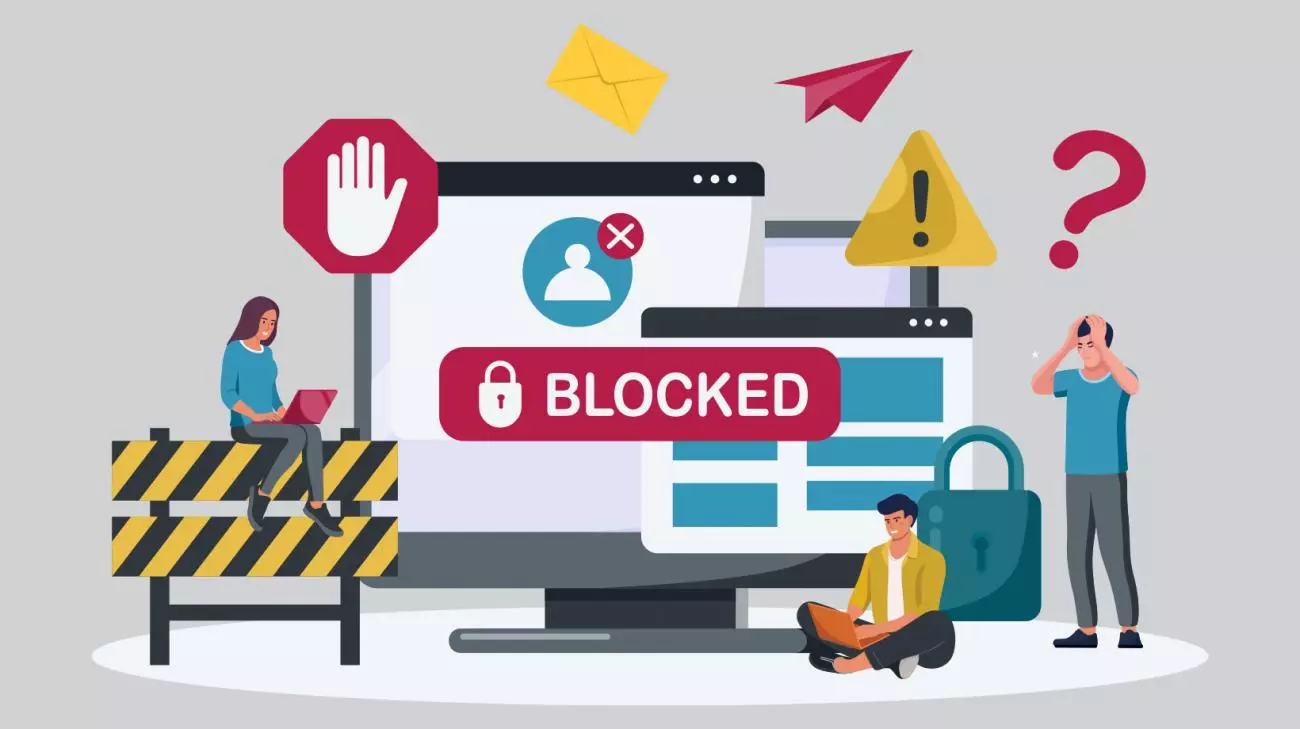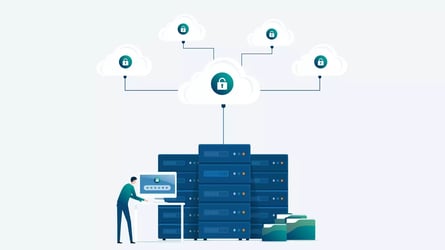Cybercriminals are coming up with new viruses and ransomware faster than ever, making it difficult for some companies with even the most stringent cybersecurity measures to keep up. As one of today’s top ransomware protection solutions, Asigra leverages innovative technology to keep its client’s data safe. In this new post, we’ve highlighted some steps to prevent ransomware attacks in the coming year.
What is a Ransomware Attack?
One of the best ways to prevent a ransomware infection is to understand precisely how a ransomware attack works. In the simplest terms, a ransomware attack is when cybercriminals hold your important data and information for ransom. This is usually accomplished by introducing malware into your system and employing encryption to disable user access to a company’s most important information.
The Importance of Solid Protection Against Ransomware
Defending against ransomware is essential, as not doing so can cause significant downtime, delays, loss of data, and much more. In some cases, cybercriminals can implement ransomware that is designed to remain dormant in your system until activated weeks or months later. Additionally, many cybercriminals employ exfiltration & double extortion as a negotiating tactic, threatening to release a company’s most sensitive information to the public unless a ransom is paid; this type of leak can destroy a company’s reputation.
How to Prevent Ransomware Attacks? Ransomware Prevention Best Practices for 2023
Learning how to protect from ransomware isn’t always so cut and dry, which is why many enlist the help of professionals with proven systems in place and in-depth knowledge on how to defend against ransomware. However, there are some tactics your company can employ, such as:
- Protecting Your Emails: Malicious attachments and links in emails are the number one way attackers get ransomware into your systems. Your first line of defense should be an email gateway and sandboxing system. Modern systems will pre-scan and verify each email prior to end-user delivery, and advanced technology like CDR (Content Disarm & Reconstruction) can even strip executable elements, such as macros and scripts, from files before sending them to users.
- Web Application Security & Firewalls: The other way infected files and malicious software can get into your environment is through online file services, web services, SaaS systems, compromised websites, and more. Strong firewall technology and scanning systems can prevent users from accidentally downloading infected files or exposing their systems to online exploits, blocking ransomware.
- Comprehensive Security Awareness Training: Your security is only as strong as your least educated employee. Training team members on best practices for avoiding ransomware is also key. Educating staff members on cybersecurity is essential, which is why implementing a comprehensive cybersecurity training program is a must. Doing so will ensure employees take a proactive approach to ransomware and can easily identify phishing emails, suspicious emails, and malicious links, as well as stressing the importance of using a VPN when logging in via public Wi-Fi. Work From Home has also created new risks as users may be connecting to work applications from personal devices and networks. Training them to be safer at home should also be a priority. Training needs to be ongoing as new cyber threats are identified.
- Keeping Software Patched & Updated: Antivirus software, web browsers, cloud computing solutions, and other software integral to your network must be updated and running the latest version & security updates. Cybercriminals are constantly coming up with new ways to bypass network security solutions, so your systems must be properly patched and updated. Keep in mind that any device management systems agents must also have updated security patches. Any out-of-date software can potentially harbor zero-day threats, allowing attackers to compromise your systems.
- Hardening Your Endpoints: Ransomware attack prevention often employs endpoint exploitation techniques, so hardening your system’s endpoints is important. One of the best ransomware prevention tactics is implementing an endpoint detection platform. Additionally, creating a vulnerability and patch management program will help you identify areas that need more oversight than others, as well as educate you on what to do should your data be compromised. And, of course, antivirus software must be part of an Endpoint Protection strategy. If users are working from home or contractors are connecting to your networks, you’ll need to have policies in place to ensure that the devices they are using are secured and that they are logging in through VPNs.
- Zero-Trust Implementation: To protect from ransomware attacks, you should assume that any user has potentially been compromised and that any file may be infected. Your security policies should limit user access privileges where possible and only allow users minimal access to any system required to perform their duties. Suppose an attacker has access to your systems. In that case, you can trick them into attacking fake systems using Deception Technology, including fake networks, fake servers, and fake files that are monitored and provide an early warning of an attack.
- Threat Detection: If ransomware actors already have access to your systems, you can implement several threat detection tools, which can analyze systems and detect unusual behavior indicative of an attack. In addition, you should be scanning for unusual exfiltration of data as ransomware attackers now employ double ransom strategies, where they both encrypt the data and threaten to release it publicly to get you to pay.
- Security Testing: Ongoing testing of your systems from security experts, PEN testing, and end-user phishing simulations can expose weak points in your existing security plan and give you the ability to strengthen them before an attacker finds them.
- Backup Your Data: If you are the victim of a ransomware attack, the first piece of advice is not to pay the ransom. You are not likely to get all your data even if you do pay, and once you pay, you are likely to be attacked again. If you have an effective backup strategy, then you will be more able to recover quickly from a ransomware attack.
- Secure Your Backups from Attack-Loops™: Because attackers know that your backup files are your means to prevent paying a ransom, they are implanting ransomware months in advance of an attack. Even air-gapped and immutable backups are not immune, as you have likely backed up infected files over many months. As soon as you recover your data, your files are encrypted again, creating an Attack-Loop. Only a highly secure backup solution like Asigra Tigris, including bidirectional scanning to find distinct types of malware, CDR scanning, Deep MFA (Multi-Factor Authentication + Multi-Person Approval), Soft Delete, and other security measures can protect your backups from being destroyed.
Will Protecting Against Ransomware Guarantee Cybersecurity?
Ransomware best practices will provide you with an added layer when it comes to cybersecurity. However, there is no failsafe solution. If you fall victim to ransomware, having a detailed action plan will help you minimize data loss and downtime. There are some key steps to take in a ransomware attack, including:
- Contacting Your Ransomware Recovery Experts: If your system has been compromised, the first step of your incident response plan will be to call your recovery, legal, & digital forensics experts to minimize data loss. They will have the necessary tools to investigate, contain and remediate any ransomware attacks.
- Executing Ransomware Reaction Tactics: At this stage, you can execute your ransomware attack action plan. This should include tactics like performing a forensic audit of your system to identify areas that may have been compromised and removing any malware to ensure your system is safe.
- Recovering Your Data: Lastly, you will need to recover any data that has been lost or compromised by either restoring your system to a previous version, restoring from your backup solutions or cloud SaaS systems, and performing data decryption if necessary.
Looking for Reliable Ransomware Protection Software?
Asigra offers reliable ransomware protection software that includes bidirectional malware detection, deep MFA, variable repository naming, soft-deletes, and more.
Contact us online today to request a demo and learn how to stop malware threats from silently targeting your backup data!





